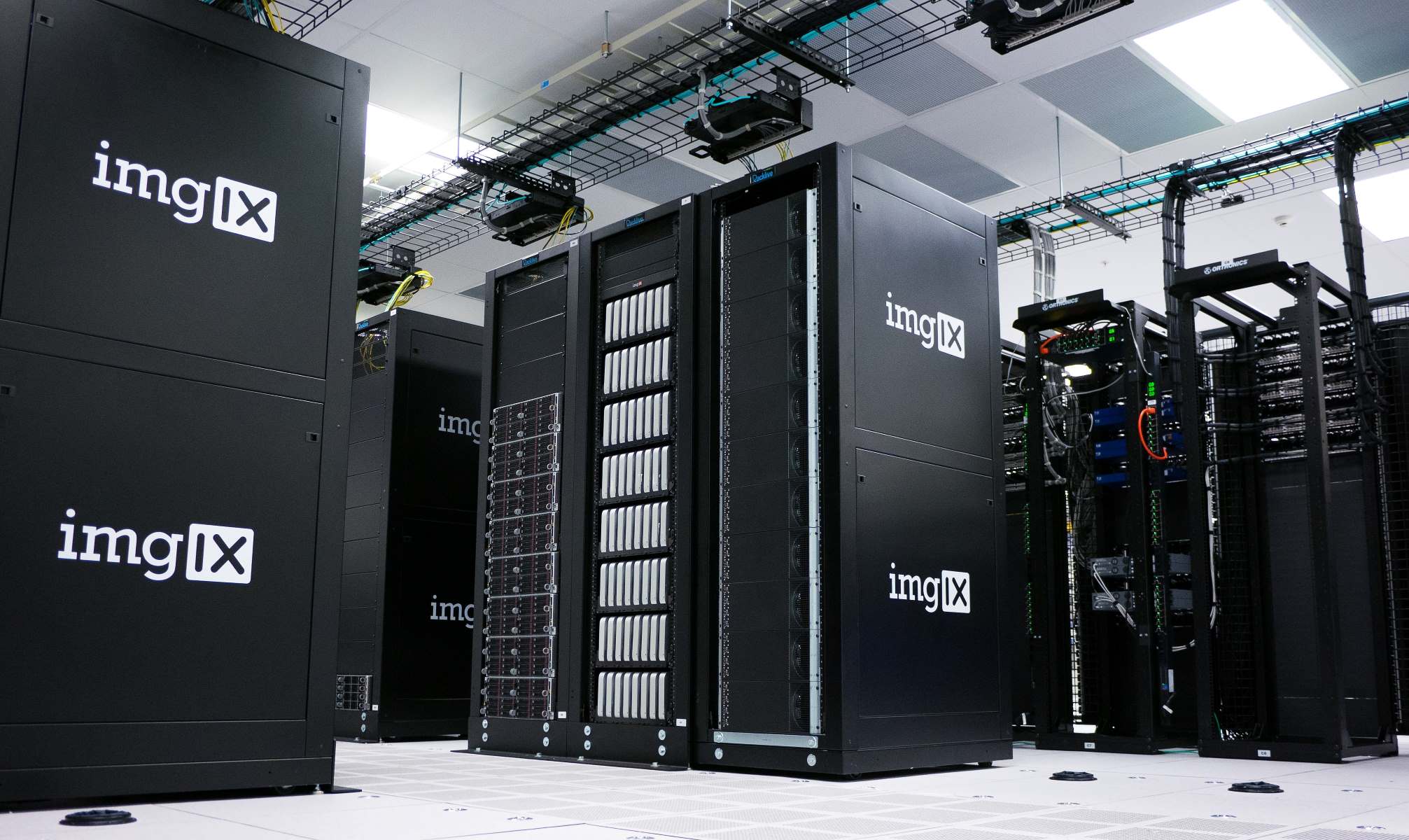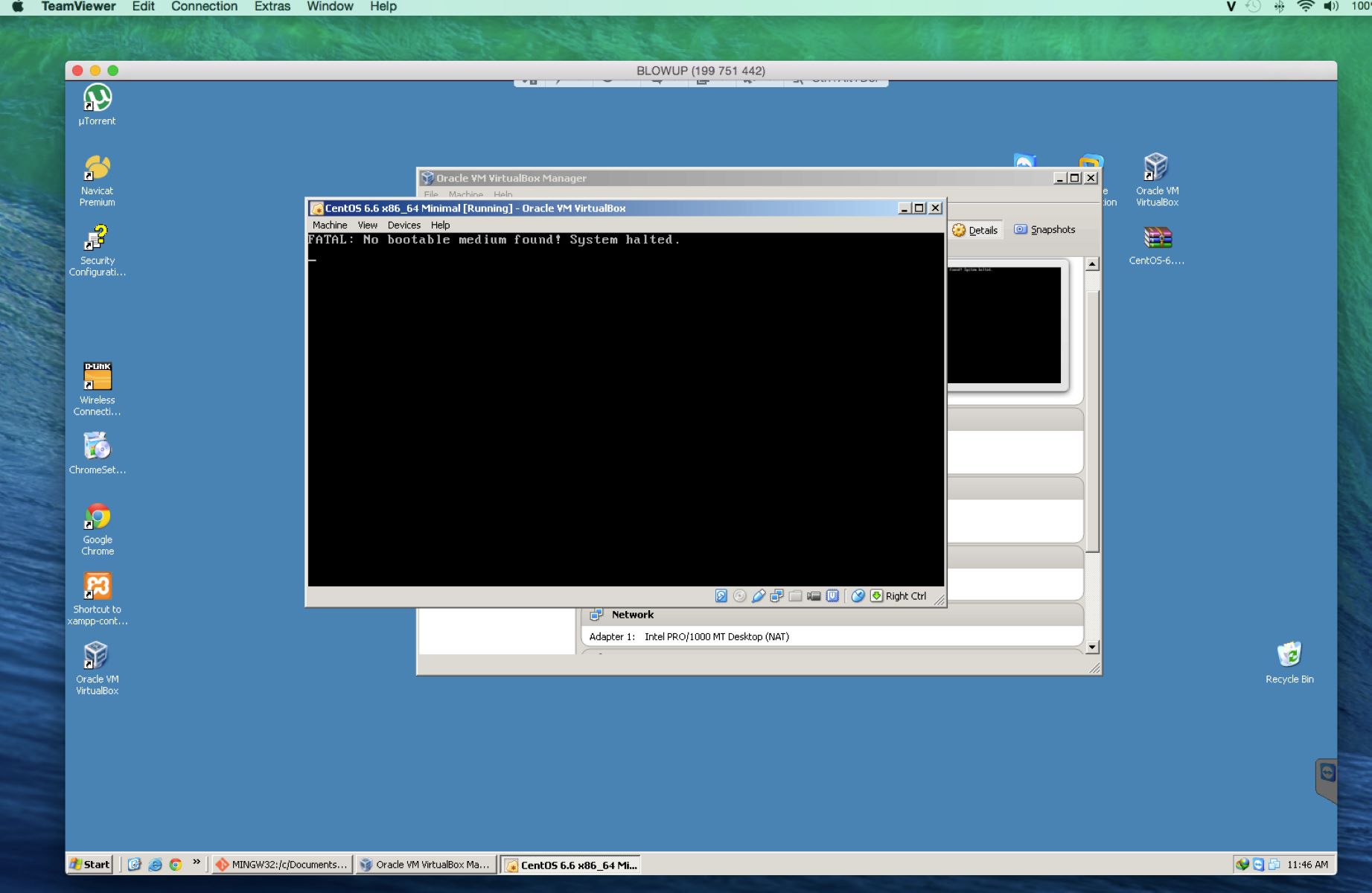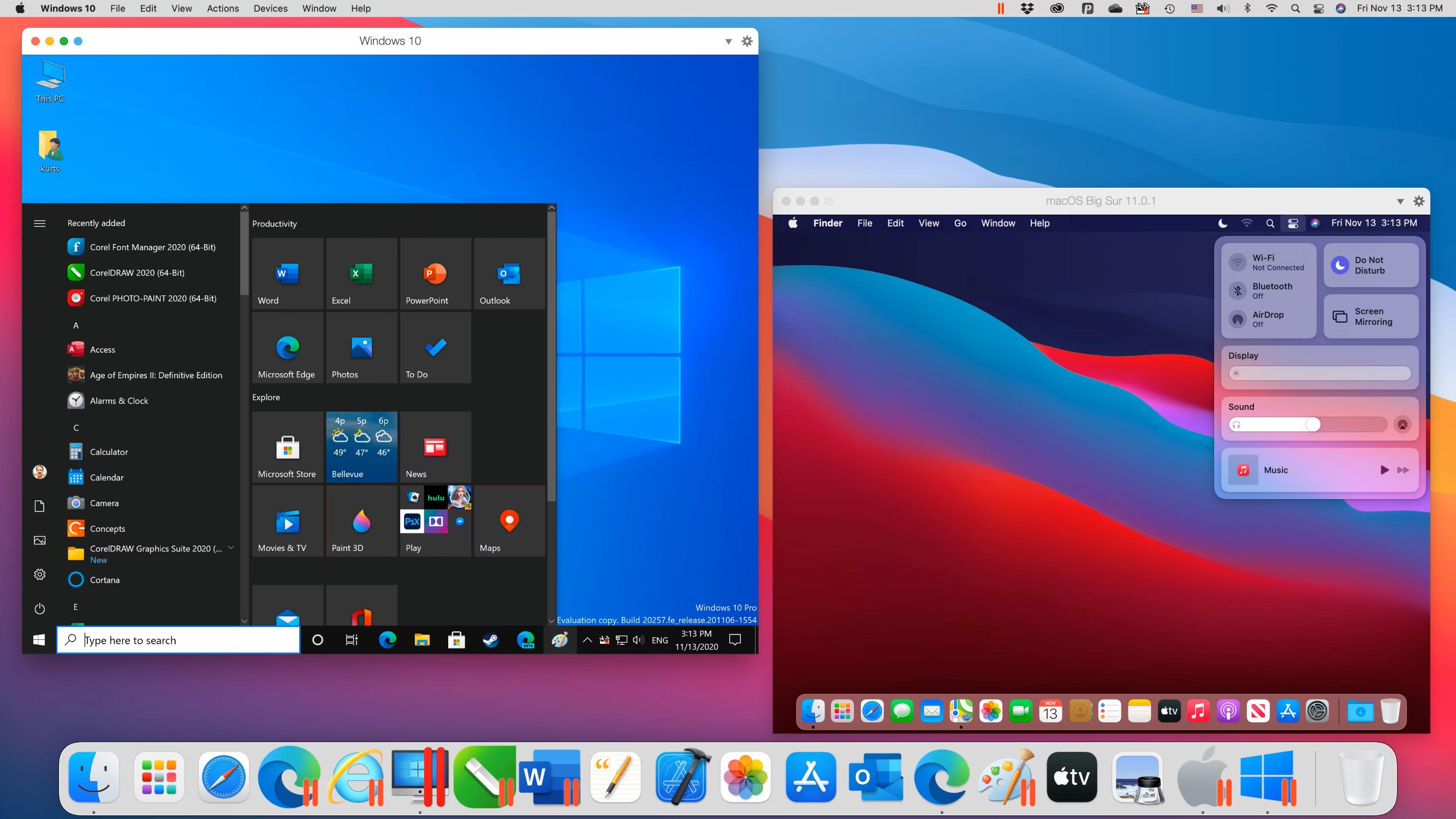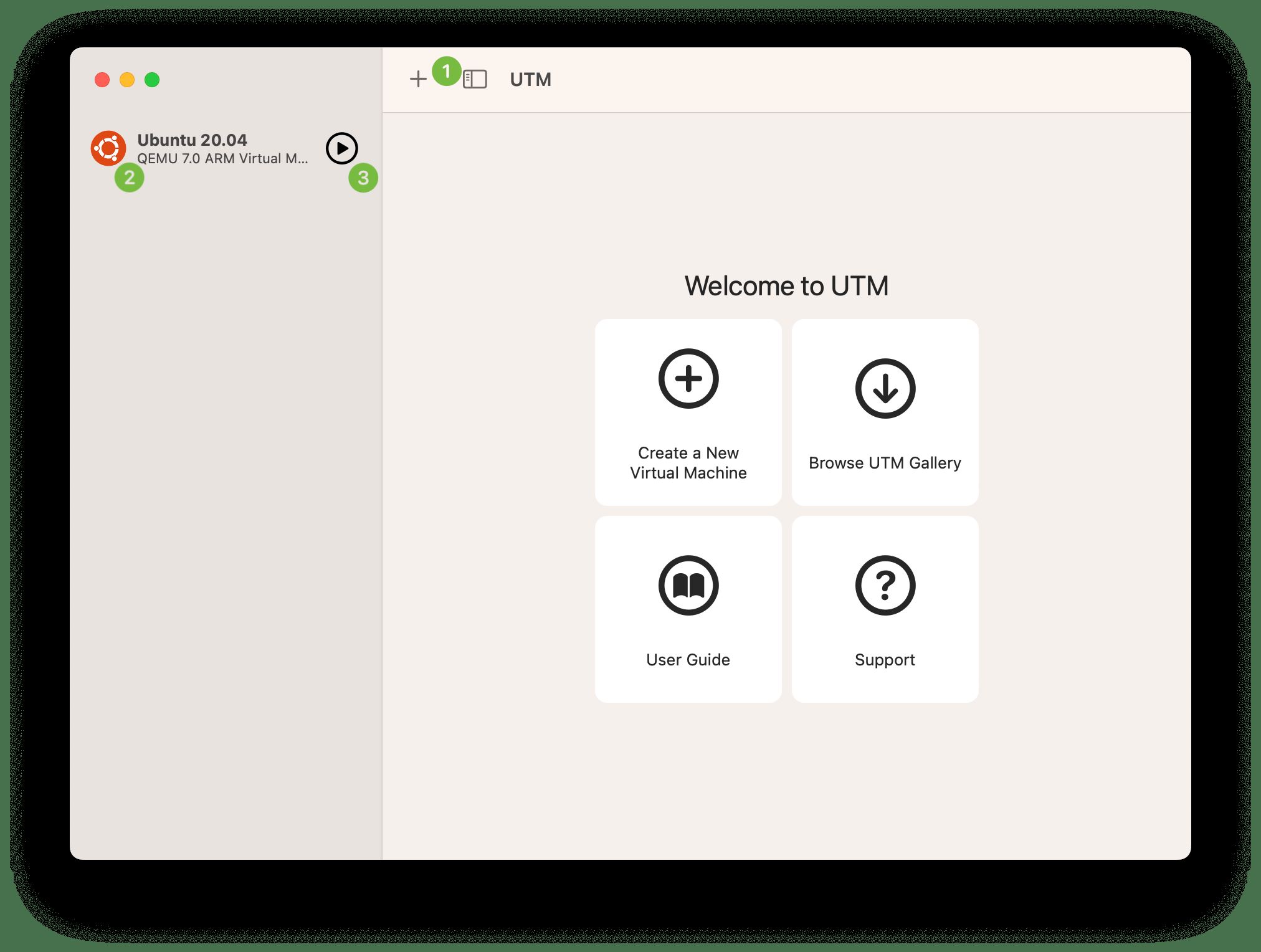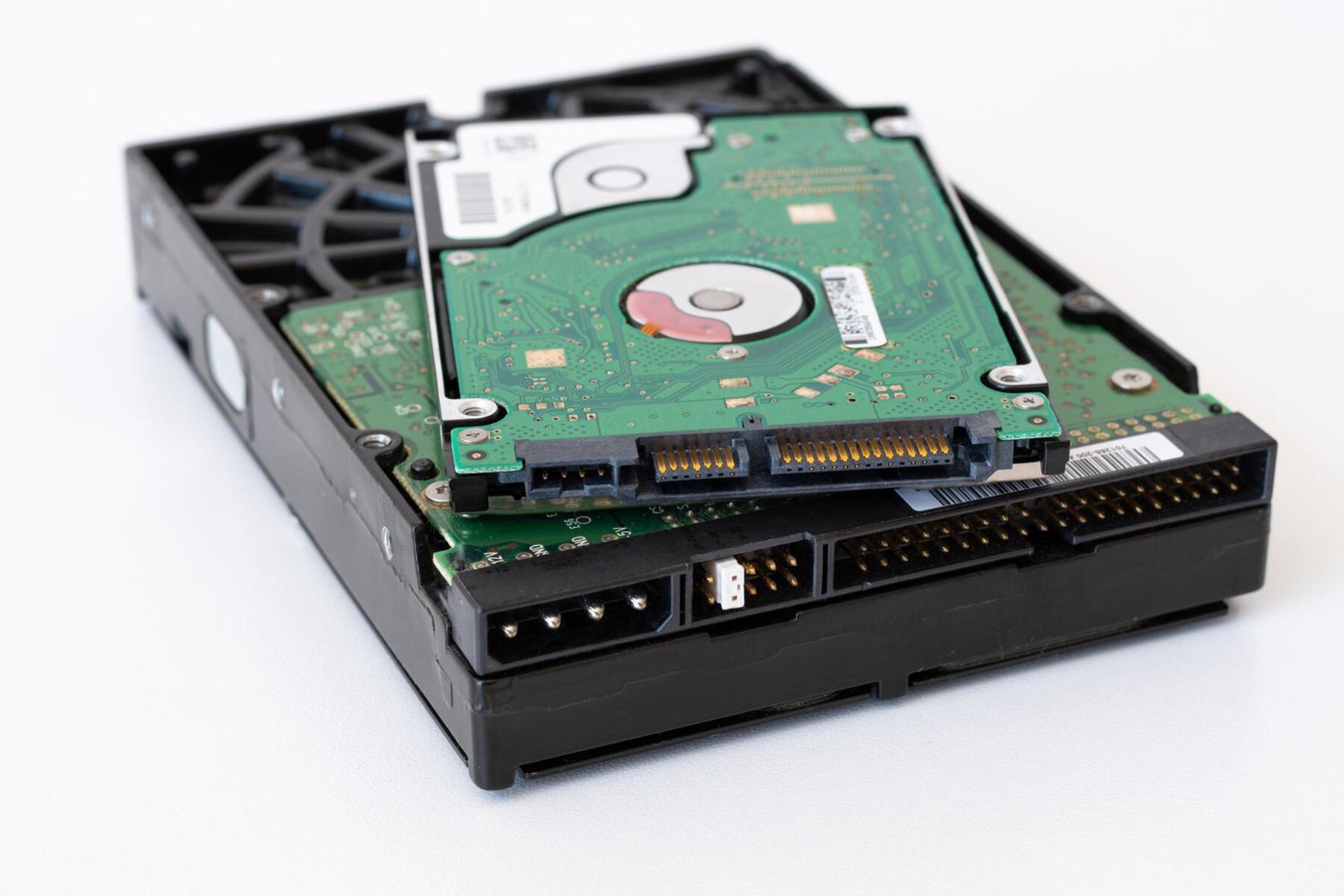Introduction
As technology continues to advance, newer and more efficient ways of running software applications are constantly being developed. Two popular options that have emerged are containers and virtual machines. While both containers and virtual machines have their advantages and use cases, it is important to understand the differences between them to determine which option is best suited for your specific needs.
Containers are a lightweight form of virtualization that allow applications to run in an isolated environment, separate from the host operating system. Unlike traditional virtual machines, containers do not require a separate operating system to function. Instead, they utilize the host operating system’s kernel, which makes them highly efficient and resource-friendly.
On the other hand, virtual machines are a complete emulation of a physical computer, including a separate operating system. They are created using a hypervisor, which enables multiple virtual machines to run on a single physical machine. Virtual machines provide stronger isolation between applications and the host operating system, making them suitable for running different operating systems simultaneously.
The architecture of containers is built upon the concept of using shared resources from the host operating system. Each container has its own file systems, libraries, and processes, but they all share the same kernel. This allows containers to be rapidly deployed and scaled, as they have a smaller overhead compared to virtual machines.
Virtual machines, on the other hand, have a complete and independent operating system installed. This means that each virtual machine requires its own set of resources, including CPU, memory, storage, and network interfaces. As a result, virtual machines are generally slower to start and require more resources to operate compared to containers.
In terms of resource usage, containers are more efficient due to their lighter footprint. Multiple containers can run on a single host machine without significant performance degradation. Virtual machines, on the other hand, have higher resource requirements as each virtual machine has its own operating system and resources allocated to it.
Definition of Containers
Containers are a form of lightweight virtualization that allows applications to run in isolated environments, separate from the host operating system. They provide a way to package and distribute software applications along with their dependencies, making them highly portable and easy to deploy.
At the core of a container is the container engine or runtime, which is responsible for managing the creation, execution, and termination of containers. Docker is one of the most popular container engines available today.
Containers are built using container images, which contain the application code, runtime environment, libraries, and other dependencies required for the application to run. These images are created using containerization technologies like Dockerfile, which specifies the steps to build the image.
One of the key features of containers is their ability to share resources with the host operating system. Unlike virtual machines that require a separate operating system for each instance, containers leverage the host operating system’s kernel. This results in faster startup times and lower resource usage.
Containers are designed to be lightweight and have minimal overhead. They provide process-level isolation, which means that each container runs as a separate process with its own file system, network stack, and process space. This isolation ensures that applications running within containers do not interfere with each other or the host system.
Containers can be easily deployed and scaled, making them ideal for modern application architectures such as microservices. They can be orchestrated using container orchestration platforms like Kubernetes, which automate the management of containers across a cluster of machines.
Overall, containers offer a flexible and efficient way to package, distribute, and run software applications. They have become the de facto standard for application deployment and are widely used in cloud computing environments and DevOps practices.
Definition of Virtual Machines
Virtual machines (VMs) are a form of virtualization that emulates a complete physical computer, including its hardware and operating system. Unlike containers, virtual machines provide a higher level of isolation between applications and the host operating system.
A virtual machine relies on a hypervisor to create and manage multiple instances of virtual machines on a single physical machine. The hypervisor acts as a virtualization layer, allocating resources such as CPU, memory, storage, and network interfaces to each virtual machine.
Each virtual machine runs its own independent operating system, which can be different from the host operating system. This allows for running multiple operating systems simultaneously on a single physical machine. For example, you can have a virtual machine running Windows on a host machine running Linux.
To create a virtual machine, you need a VM image, which contains the operating system and any software and configurations required. This image is then loaded by the hypervisor to create a virtual instance of the machine.
Virtual machines offer strong isolation between applications as each virtual machine operates in its own virtualized environment. This isolation prevents applications from affecting each other or the host system. It also enables the running of legacy or specialized software that may require a specific operating system or configuration.
Compared to containers, virtual machines have a higher resource overhead because each virtual machine requires its own set of resources, including a separate operating system. This can lead to slower startup times and increased resource usage compared to containers.
Virtual machines are commonly used in scenarios where strong isolation is required, such as hosting multiple applications with different security requirements or testing software in different operating systems. They are also popular in cloud computing environments as they provide a reliable and scalable solution for running a variety of workloads.
In summary, virtual machines provide complete emulations of physical machines, allowing for the simultaneous running of multiple operating systems. They offer stronger isolation between applications but require more resources compared to containers.
Architecture of Containers
Containers are built on a client-server architecture, consisting of three main components: the container runtime, container images, and the host operating system.
The container runtime is responsible for the creation, execution, and termination of containers. It interacts with the host operating system to allocate resources and manage the container’s lifecycle. Popular container runtimes include Docker, containerd, and Podman.
Container images serve as the building blocks for containers. A container image contains the application code, runtime environment, libraries, and other dependencies required for the application to run. Images are created using containerization technologies like Dockerfile, which specifies the steps to build the image.
The host operating system plays a crucial role in container architecture. Containers leverage the host operating system’s kernel, which allows them to share system resources and avoid the need for a separate operating system for each instance. This lightweight approach makes containers highly efficient and resource-friendly.
One of the key architectural features of containers is their ability to provide process-level isolation. Each container runs as a separate process with its own isolated filesystem, network stack, and process space. This isolation ensures that containers do not interfere with each other or the host system.
Containers communicate with each other and the outside world through network interfaces. They can be connected to virtual networks, allowing them to communicate with other containers or external services. Container orchestration platforms like Kubernetes provide advanced networking capabilities to manage container communication and connectivity.
Container architecture also supports the concept of volumes, which allow containers to store and access data persistently. Volumes provide a way to share data between containers or store data that needs to persist even after a container restarts or stops.
In addition, container architecture enables easy scalability and deployment. Containers can be easily created, duplicated, and scaled horizontally to handle increased workloads. This makes containers ideal for modern application architectures like microservices, where applications are broken down into smaller, independent components.
Overall, the architecture of containers is designed to provide lightweight, isolated, and efficient runtime environments for applications. By leveraging the host operating system and providing process-level isolation, containers offer a highly scalable and portable solution for running software applications.
Architecture of Virtual Machines
Virtual machines (VMs) have a distinct architecture that is designed to emulate a complete physical computer. It consists of three main components: the hypervisor, virtual machine images, and the host hardware.
The hypervisor, also known as the virtual machine monitor (VMM), is the software layer that enables the creation and management of virtual machines. It runs directly on the host hardware and acts as an intermediary between the physical hardware and the virtual machines. The hypervisor allocates resources such as CPU, memory, storage, and network interfaces to each virtual machine.
Virtual machine images serve as the basis for creating and running virtual machines. A virtual machine image contains a complete operating system installation, along with any software, configurations, and data required for the virtual machine. These images can be created from scratch or downloaded from repositories.
Each virtual machine runs its own independent operating system, which can be different from the host operating system. The virtual machine’s operating system interacts with the hypervisor to manage the virtual hardware and resources assigned to the virtual machine. This allows for running multiple operating systems simultaneously on a single physical machine.
The host hardware provides the underlying infrastructure for virtual machines. It includes the physical CPU, memory, storage devices, and network interfaces. The hypervisor interacts directly with the hardware to allocate resources to the virtual machines, ensuring that each virtual machine operates in its own isolated environment.
Virtual machine architecture offers strong isolation between applications and the host operating system. Each virtual machine runs in its own virtualized environment, separate from other virtual machines and the host system. This isolation ensures that applications running within virtual machines do not interfere with each other or the host system.
Virtual machines also provide the flexibility to allocate specific resources to each instance. This means that virtual machines can have different amounts of CPU, memory, and storage based on the requirements of the workload. It allows for fine-tuning the performance and resource allocation of each virtual machine.
Additionally, virtual machines support features like snapshots and live migration. Snapshots allow for creating a point-in-time copy of a virtual machine, which can be used for backup purposes or to revert to a previous state. Live migration enables moving a running virtual machine from one host to another without disruption, ensuring high availability and load balancing.
In summary, the architecture of virtual machines revolves around the hypervisor, virtual machine images, and the host hardware. It allows for the emulation of complete physical computers, running multiple operating systems simultaneously, and providing strong isolation between applications and the host system.
Resource Usage of Containers
Containers are known for their efficient resource utilization, making them a popular choice for application deployment and scalability. Several factors contribute to the optimized resource usage of containers.
One key advantage of containers is their lightweight nature. Unlike virtual machines that require a separate operating system for each instance, containers leverage the host operating system’s kernel. This means that containers share the same kernel as the host, resulting in minimal overhead and reduced resource usage. The container runtime manages the resource allocation for each container, ensuring optimal utilization of CPU, memory, and storage.
Containers are highly efficient in terms of memory usage. They have lower memory overhead compared to traditional virtual machines because they do not require a dedicated operating system for each instance. The container runtime isolates the container processes and their associated memory, allowing multiple containers to run side by side, efficiently sharing available memory resources.
Containerization also provides efficient CPU utilization. Containers can take advantage of the host’s CPU cores without the need for virtualization layers, resulting in near-native performance. The container runtime effectively manages CPU resource allocation, allowing containers to scale dynamically based on workload demands, ensuring efficient CPU consumption.
In terms of storage usage, containers provide efficient utilization of disk space. Container images are typically smaller in size compared to virtual machine disk images. This is because container images only include the essential dependencies and libraries required for the application to run, reducing the overall storage footprint. Additionally, container orchestration platforms like Kubernetes offer advanced storage management features, allowing for efficient data persistence and shared storage among containers.
Containers are designed for high scalability, which further optimizes resource usage. They can be easily replicated and scaled horizontally, allowing multiple instances of the same container to run simultaneously. This enables load balancing and efficient utilization of available resources across a cluster of machines.
Furthermore, the lightweight and portable nature of containers promotes efficient resource allocation in cloud environments. Containers can be deployed quickly and easily across different hosts, enabling efficient utilization of infrastructure resources. Additionally, container orchestration platforms like Kubernetes provide automated resource management, optimizing resource allocation based on application demands.
Overall, containers offer efficient resource usage through their lightweight design, shared kernel, optimized memory and CPU utilization, and scalability capabilities. These factors make containers an attractive choice for deploying and running applications in resource-constrained environments with high efficiency and cost-effectiveness.
Resource Usage of Virtual Machines
Virtual machines (VMs) require dedicated resources, including CPU, memory, storage, and network interfaces, for each instance. This dedicated resource allocation impacts the resource usage of virtual machines. Let’s explore the factors that affect the resource utilization of VMs.
Memory usage in virtual machines can be higher compared to containers due to the need for separate operating systems for each instance. Each VM runs independently with its own operating system, resulting in a higher memory footprint. However, advancements in virtualization technologies have introduced techniques like memory ballooning and dynamic memory allocation, allowing for efficient memory utilization by dynamically allocating and reclaiming memory based on workload demand.
CPU usage in virtual machines can vary depending on the workload and the number of virtual machines running on the host. Virtual machines incur a slight performance overhead due to the virtualization layer. The hypervisor manages CPU resource allocation and scheduling between virtual machines, ensuring fair distribution of CPU resources. However, the virtualization layer adds an additional layer of abstraction, which may result in slightly lower CPU performance compared to running on bare-metal hardware.
Storage usage in virtual machines depends on the size of the virtual machine disk image and the amount of data stored within the virtual machine. Each virtual machine has its own dedicated disk image, which can consume significant storage space. Additionally, virtual machines may require additional storage for snapshots, backups, and data replication. The hypervisor manages the storage allocation and provides storage management capabilities, such as thin provisioning and storage virtualization, to optimize disk space utilization.
Networking in virtual machines involves the allocation of virtual network interfaces and virtual switches. Each virtual machine requires dedicated network resources, such as MAC addresses and IP addresses. The hypervisor manages the network interfaces and ensures that virtual machines have access to the required network connectivity. By utilizing techniques like network virtualization, virtual machines can efficiently share physical network resources while maintaining network isolation.
Virtual machines provide strong isolation between applications, which increases security but also adds overhead in terms of resource usage. Each instance requires its own full operating system, resulting in higher resource consumption compared to containers. However, advancements in hypervisor technology have improved virtual machine performance and resource efficiency over the years.
While virtual machines generally have higher resource usage compared to containers, virtualization technology continues to evolve to optimize resource allocation and improve performance. Techniques like hardware-assisted virtualization, memory ballooning, and dynamic resource allocation have helped minimize resource wastage and enhance efficiency in virtual machine environments.
In summary, virtual machines require dedicated resources for each instance, including CPU, memory, storage, and network interfaces. The use of separate operating systems for each virtual machine can result in higher resource consumption compared to containers. However, advancements in virtualization technologies have improved resource management and efficiency in virtual machine environments.
Isolation and Security in Containers
Containers offer a level of isolation and security to applications running within them, making them a popular choice for deploying and running software in various environments. Let’s explore how containers achieve isolation and security.
Containers provide process-level isolation, ensuring that each container runs as a separate process with its own file system, network stack, and process space. This isolation prevents applications running within containers from interfering with each other or the host system. Each container has its own isolated environment, allowing applications to run independently without affecting other containers or the underlying infrastructure.
Container runtimes utilize several mechanisms to enforce isolation and security. Namespaces define separate views of system resources for each container, including processes, network interfaces, and file systems. This ensures that containers operate in their own isolated namespaces, unaware of other containers or the host system.
Additionally, container runtimes employ control groups (cgroups), which allow the allocation and limitation of system resources, such as CPU, memory, and disk I/O. Cgroups help prevent container processes from consuming excessive resources, ensuring fair resource usage across containers and the host system.
Container images also contribute to the isolation and security of applications. Container images encapsulate the application code, runtime dependencies, and libraries required to run the application. Images are built with a minimal attack surface, containing only the necessary components, reducing the potential vulnerabilities that can be exploited.
Container security can be enhanced through various practices. Regular updates and patching of container images and the host system help to mitigate security vulnerabilities. Implementing secure container registries, using image scanning tools, and establishing container image signing and verification processes further enhance security by ensuring the authenticity and integrity of container images.
Container orchestration platforms, such as Kubernetes, provide additional security features. These include network policies to control container communication, secrets management to securely store sensitive information, and role-based access control (RBAC) to manage user permissions and access to resources.
However, it should be noted that the level of security and isolation provided by containers is not absolute. Vulnerabilities within container runtimes or misconfigurations can potentially be exploited. Therefore, it is important to keep container runtimes up to date, follow security best practices, and regularly monitor and assess the security of containerized applications.
While containers offer a good level of isolation and security, it is essential to adopt a defense-in-depth approach. Combining container-level security measures with host systems security, proper network segmentation, and robust access controls, organizations can enhance the overall security posture of their containerized environments.
In summary, containers provide process-level isolation and security through the use of namespaces, control groups, and secure container images. Implementing security best practices and leveraging container orchestration platforms further enhance the overall security and isolation of applications running within containers.
Isolation and Security in Virtual Machines
Virtual machines (VMs) offer a high level of isolation and security for running applications, making them a popular choice in many environments. Let’s explore how virtual machines achieve isolation and security.
One of the key benefits of virtual machines is their ability to provide strong isolation between applications. Each virtual machine runs its own complete operating system, which ensures that applications are encapsulated within their own virtualized environment. This isolation prevents applications and processes within one virtual machine from interfering with other virtual machines or the host system.
The hypervisor, which is responsible for managing virtual machines, enforces this isolation by allocating dedicated resources to each virtual machine, including CPU, memory, disk space, and network interfaces. This ensures that the resources of one virtual machine are not accessible or affected by other virtual machines.
Virtual machines also offer enhanced security features. Since each virtual machine operates as an independent entity with its own isolated environment, vulnerabilities or compromises within one virtual machine do not directly impact other virtual machines or the host system.
Virtual machine snapshots provide an additional layer of security. Snapshots enable taking a point-in-time copy of a virtual machine’s state, allowing for easy rollbacks in case of security breaches or configuration errors. This ensures the integrity and availability of the virtual machine and its applications.
In terms of network security, virtual machines can be configured with separate virtual network interfaces and firewall rules. This allows for segmentation and isolation of network traffic between virtual machines, limiting communication to the necessary and authorized paths.
The use of separate operating systems in virtual machines also contributes to their overall security. Each virtual machine can have its own set of security measures, such as antivirus software, firewalls, and secure configurations, tailored to the specific operating system and applications running within it.
Furthermore, virtual machine management tools and platforms like VMware and Hyper-V offer additional security features. These include the ability to encrypt virtual machine disk images, deploy intrusion detection systems, and monitor and control access to virtual machines using role-based access control (RBAC).
However, it is important to note that the security of virtual machines heavily relies on proper configuration and management. Regular patching and updates to the virtual machine and hypervisor, as well as adherence to security best practices, are crucial to ensure a secure virtual machine environment.
It’s worth mentioning that the overhead of running a separate operating system for each virtual machine can result in increased attack surfaces and resource usage compared to containers. However, advancements in virtualization technologies continue to enhance security by addressing these concerns and improving the overall security posture of virtual machine environments.
In summary, virtual machines provide strong isolation between applications through their dedicated resource allocation and separate operating systems. The use of snapshots, network segmentation, and additional security features further enhances the security of virtual machines, ensuring the integrity and isolation of applications running within them.
Portability of Containers
One of the key advantages of containers is their high portability, allowing applications to be easily moved and deployed across different environments. Let’s explore the factors that contribute to the portability of containers.
Containerization enables applications to be packaged along with their dependencies into portable container images. These images are self-contained and encapsulate the application code, runtime environment, libraries, and configurations required to run the application. The portable nature of container images ensures that applications can run consistently across different environments and infrastructure.
With containerization, applications can be developed, tested, and deployed in one environment and then run seamlessly in another environment, regardless of the underlying operating system or infrastructure. This avoids the issues often encountered with conflicting dependencies and configurations that can arise when deploying applications in different environments.
Container images are designed to be platform-agnostic, allowing them to run on different operating systems and cloud platforms. Containers can be deployed on a wide range of infrastructure, from local development machines to public and private cloud environments. This flexibility enables organizations to choose the most suitable infrastructure for their applications without being tied to a specific platform.
Container orchestration platforms, such as Kubernetes, further enhance the portability of containers. These platforms provide a consistent deployment and management framework for containers across different environments. They abstract away the underlying infrastructure and provide a unified interface for managing containers, making it easier to deploy and scale applications across various clusters of machines.
Another aspect that contributes to container portability is the use of container registries. Container registries store and distribute container images, making it easy to share and collaborate on applications across different teams and environments. Public container registries like Docker Hub and private registries offer a centralized repository for container images, ensuring that applications can be readily accessed and deployed wherever needed.
Container images also facilitate versioning and rollback capabilities, enabling developers to maintain different versions of an application and quickly revert to a previous state if needed. This ensures that applications can be deployed reliably and consistently, even as they evolve and undergo updates.
The ease of moving and deploying containers also translates into simplified application deployment pipelines and DevOps practices. Containers are well-suited for continuous integration and continuous deployment (CI/CD) workflows, where applications are built, tested, and deployed in an automated and rapid manner. This accelerates software delivery and promotes a consistent and efficient deployment process.
Overall, the portability of containers allows for seamless movement and deployment of applications across different environments, operating systems, and infrastructure. The use of container images, container orchestration platforms, and container registries simplifies application development, deployment, and management, making containers a preferred choice for modern software delivery pipelines.
Portability of Virtual Machines
Virtual machines (VMs) offer a certain degree of portability, allowing applications to be transferred and deployed across different environments and platforms. While not as lightweight or flexible as containers, VMs possess several features that contribute to their portability.
One of the key aspects that enable VM portability is their ability to encapsulate an entire operating system along with the application and its dependencies. A VM consists of a virtual hard disk image and a virtualized hardware environment, including CPU, memory, storage, and network interfaces. This self-contained nature allows VMs to be easily moved and deployed on various platforms, regardless of the underlying host operating system or hardware.
VMs are compatible with different virtualization platforms, such as VMware, Hyper-V, and OpenStack, which can run on a variety of operating systems. This cross-platform compatibility ensures that VMs can be migrated and run on different infrastructure and virtualization environments with minimal modifications or dependencies.
Virtual machine images also contribute to the portability of VMs. These images can be easily created, saved, and replicated, allowing for the efficient transfer and deployment of VM instances. The images contain a snapshot of the entire VM’s state, including the installed operating system, applications, and configurations, making it possible to recreate the VM on another host with the same state.
To facilitate VM portability, various tools and formats have been developed. For instance, the Open Virtualization Format (OVF) is a standard that allows for the packaging and distribution of VM images in a platform-independent manner. OVF files encapsulate the VM’s configuration and disk contents, making it easier to transport VMs between different virtualization environments.
Live migration is another feature that enhances VM portability. With live migration, a running VM can be moved from one physical host to another without disruption. This enables load balancing, hardware maintenance, and disaster recovery scenarios, while ensuring continuous accessibility and minimal downtime for applications running within VMs.
However, it is important to note that VM portability can be affected by differences in underlying hardware architecture. For instance, VMs created on an x86-based server may not be directly transferable to an ARM-based server due to architectural differences. Nonetheless, the availability of virtualization platforms and compatible hypervisors helps to bridge these gaps and provide portability between similar hardware architectures.
In summary, virtual machines offer a level of portability that allows for the transfer and deployment of applications across different virtualization platforms and hardware environments. The encapsulation of complete operating systems, the use of standard image formats, and features like live migration contribute to the portability of VMs, making them a reliable choice for running applications in diverse infrastructure scenarios.
Use Cases for Containers
Containers have gained immense popularity in various industries and are widely used for a range of use cases. Their lightweight, portable, and scalable nature makes them suitable for diverse application scenarios. Let’s explore some of the common use cases for containers.
Application Deployment and Packaging: Containers are ideal for deploying applications, as they provide a self-contained environment that includes the necessary dependencies and configurations. Applications can be easily packaged into container images, making it straightforward to distribute and deploy them on different infrastructure, from local development machines to production servers.
Microservices Architecture: Containers play a pivotal role in the implementation of microservices, a modern architectural approach for building scalable and modular applications. Each microservice can run in its own container, enabling teams to develop, test, and deploy services independently. Containers provide the isolation necessary to run multiple microservices on a single host or across a cluster of machines seamlessly.
Continuous Integration and Continuous Deployment (CI/CD): Containers are well-suited for CI/CD workflows, where applications undergo automated testing, build, and deployment processes. Containers ensure consistency across different stages of the software development lifecycle, enabling faster delivery and reducing deployment issues caused by differences in environments.
Development and Testing Environments: Containers provide developers and quality assurance teams with consistent and reproducible environments. Developers can package their applications and associated dependencies into containers, ensuring that the development environment matches the production environment. This reduces the “It works on my machine” problem and improves collaboration between developers and other stakeholders.
Scalability and Elasticity: Containers excel in their ability to scale applications both horizontally and vertically. Containers can be easily replicated, allowing applications to handle increased workloads by adding more containers. Container orchestration platforms such as Kubernetes can automate scaling based on demand, ensuring efficient resource utilization and optimal application performance.
Multi-Cloud and Hybrid Cloud Deployments: Containers offer flexibility in multi-cloud or hybrid cloud environments. With containers, applications can be developed and deployed once, and then run on different cloud providers or on-premises infrastructure seamlessly. This facilitates workload portability, enabling organizations to leverage the benefits of different cloud services without being locked into a specific vendor.
DevOps Practices and Collaboration: Containers promote DevOps practices by enabling collaboration between development and operations teams. Containers facilitate the adoption of infrastructure-as-code principles, allowing infrastructure configurations to be version-controlled, shared, and reproduced consistently. This streamlines the deployment and management of applications, resulting in more efficient and collaborative workflows.
Big Data and AI/ML Workloads: Containers are increasingly used for running big data analytics and artificial intelligence/machine learning workloads. Containerization allows these resource-intensive applications to be isolated and deployed in a consistent and scalable manner. Containers provide the necessary flexibility and resource utilization required by distributed data processing frameworks and AI/ML models.
Legacy Application Modernization: Containers can be used to modernize and containerize legacy applications, making them more agile, scalable, and easily deployable. By containerizing legacy applications, organizations can leverage the benefits of container orchestration, automated scaling, and microservices architecture, without the need for a full-scale rewrite.
These are just a few examples of the various use cases where containers can provide value. The versatility and flexibility offered by containers make them a powerful tool for modern application development, deployment, and management across a wide range of industries and scenarios.
Use Cases for Virtual Machines
Virtual machines (VMs) have been widely adopted and are used across various industries for a multitude of use cases. Their ability to emulate complete operating systems and provide strong isolation makes them suitable for a range of applications. Let’s explore some common use cases for virtual machines.
Server Virtualization: One of the primary use cases for virtual machines is server virtualization. VMs enable multiple virtual servers to run on a single physical server, allowing for efficient resource utilization and consolidation. Server virtualization helps organizations optimize hardware costs, improve resource management, and simplify server maintenance and provisioning processes.
Application Compatibility: Virtual machines provide an ideal solution for running legacy or incompatible applications. By emulating specific operating systems and hardware configurations, VMs allow organizations to maintain applications that rely on outdated technologies or specific software dependencies. This enables businesses to continue using critical applications without the need for dedicated physical hardware or disrupting existing infrastructure.
Testing and Development Environments: Virtual machines are widely used for creating isolated testing and development environments. VMs can be easily cloned or snapshots can be taken, allowing developers to quickly provision new environments for software development, testing, and debugging. This promotes collaboration, reduces the risk of interfering with production systems, and enables teams to easily reproduce bugs and test application compatibility across different environments.
Sandboxing and Security Testing: Virtual machines provide a controlled sandboxed environment for security testing and vulnerability analysis. By running potentially malicious programs or performing security tests within a virtual machine, organizations can isolate the impact and prevent any potential damage to the host system. VM snapshots can also be leveraged to revert to a clean and secure state after testing.
Disaster Recovery: Virtual machines play a crucial role in disaster recovery strategies. VM snapshots and replication techniques allow for efficient backup and restoration of critical systems. In the event of hardware failures or disasters, VMs can be quickly activated on alternate hardware to ensure business continuity and reduce downtime.
Desktop Virtualization: Virtual desktop infrastructure (VDI) leverages virtual machines to provide desktop environments to end-users. VDI allows organizations to centralize desktop management, enhance security, and simplify software updates. Virtual desktops can be provisioned for remote or mobile workers, ensuring consistent and secure access to applications and data from any device and location.
Cloud Computing: Virtual machines are integral to cloud computing platforms. Cloud providers utilize virtualization to offer on-demand virtual machines as infrastructure-as-a-service (IaaS). Users can quickly provision and scale VM instances to meet their compute requirements, making virtual machines a fundamental building block in the cloud computing paradigm.
Education and Training: Virtual machines are extensively used in educational settings for training, teaching, and learning purposes. Educational institutions can provide students with hands-on experience using different operating systems and software applications within a controlled and isolated virtual machine environment.
Software Demos and Evaluations: Virtual machines provide a convenient way to distribute and run software demos and evaluations. Vendors can package their software solutions within VM images, allowing potential customers to quickly spin up a pre-configured environment to test the software’s functionality and performance without the need for complex installations or dedicated hardware.
These are just a few examples of the many use cases for virtual machines. With their versatility, isolation capabilities, and ability to emulate complete systems, VMs continue to be a valuable technology for running various workloads across different industries.
Conclusion
Containers and virtual machines both offer unique advantages and use cases in the world of software deployment and infrastructure management. Containers provide lightweight and portable runtime environments, with efficient resource utilization, making them ideal for modern application architectures like microservices. They excel in scenarios that require rapid deployment, scalability, and compatibility across different platforms. Containers also promote DevOps practices and enable seamless collaboration between development and operations teams.
On the other hand, virtual machines provide strong isolation, security, and compatibility with legacy applications. They allow for full emulation of a physical computer, enabling the running of multiple operating systems simultaneously. Virtual machines are well-suited for server consolidation, legacy application maintenance, and complex enterprise infrastructures. They are especially valuable in scenarios where complete isolation or specialized hardware configurations are required.
Choosing between containers and virtual machines depends on various factors such as specific application requirements, resource constraints, security considerations, and level of isolation needed. Organizations can also implement a hybrid approach, leveraging both containers and virtual machines together to meet different use cases within their infrastructure.
In conclusion, containers and virtual machines offer distinct advantages and use cases, allowing businesses to optimize their software deployment, resource utilization, and infrastructure management. Understanding the differences and capabilities of each technology is crucial in selecting the best approach to meet the unique needs of an organization and its applications.







